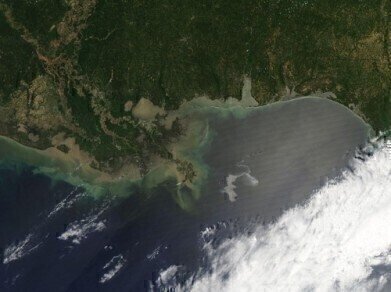-
 The 2010 oil spill was partially caused by an oil spill
The 2010 oil spill was partially caused by an oil spill
Fuel for Thought
Equipment failure 'caused BP Deepwater Horizon spill'
Jun 12 2014
The 2010 Gulf of Mexico oil spill was partly caused by the failure of safety equipment on the BP Deepwater Horizon oil rig. The spill - which is the worst offshore spill in US history - was partially due to the failure of a blowout preventer, a vital piece of equipment on rigs, which was not owned by BP.
A US government inquiry found the equipment failed to operate in the correct manner, contributing to the chain of events that resulted in a spill that continued for 87 days. The Chemical Safety and Hazard Investigation Board concluded that the blowout preventer - a stack of valves that seal the well if a leak begins - did not function correctly. If the equipment had worked as intended, it would have prevented further leaks by closing steel rams over the top of the well; sealing it effectively.
While the equipment may not have been able to stop the first gas explosion that killed 11 workers, if it had functioned it could have stopped oil from leaking into the Gulf of Mexico, causing widespread contamination. The failure to secure the well led to an estimated 4.2 million barrels of crude oil spilling into the water.
In a statement, BP said that the findings were “consistent with the conclusion of every other official investigation: that the Deepwater Horizon accident was the result of multiple causes, involving multiple parties”.
The faulty blowout preventer was owned and operated by Transocean, which was also responsible for its maintenance. However, BP does not agree with the reason the Chemical Safety Board gave for the equipment's failure.
According to the board, the problem behind the blowout preventer not functioning was that the pipe that connected the rig and wellhead buckled within the first minutes if the spill as crews fought to control it. As a result, the rams on the equipment were triggered but weren't able to close over the wellhead due to the buckled pipe.
In contrast, BP said that the preventer didn't work straight away as the activation switches didn't function. It believes that the pipe buckled later on. The company said this aspect of the findings was flawed and the board had based them on incorrect assumptions that did not line up with other inquiries' findings. If BP is correct, it would mean more of the blame for the spill would be placed on Transocean's shoulders.
Digital Edition
PIN 25.2 Apr/May
May 2024
Safety - Carbon monoxide toxic and flammable gas detection Analytical Instrumentation - Density: A fundamental parameter at critical stages within the petroleum sector - Advancements and...
View all digital editions
Events
May 18 2024 Rio de Janeiro, Brazil
May 19 2024 Minneapolis, MN
May 20 2024 Columbus, OH, USA
May 20 2024 Dubai, United Arab Emirates
May 23 2024 Beijing, China

















